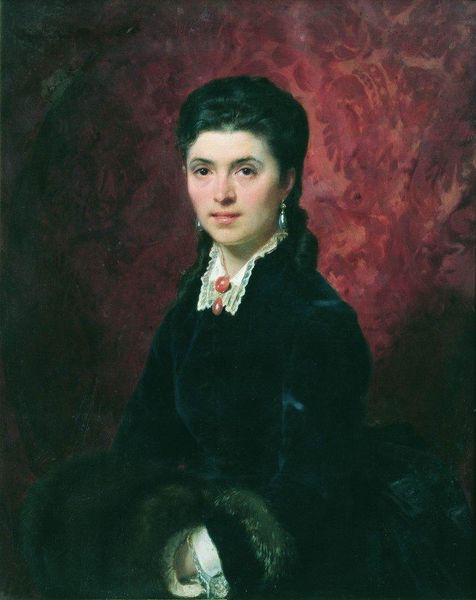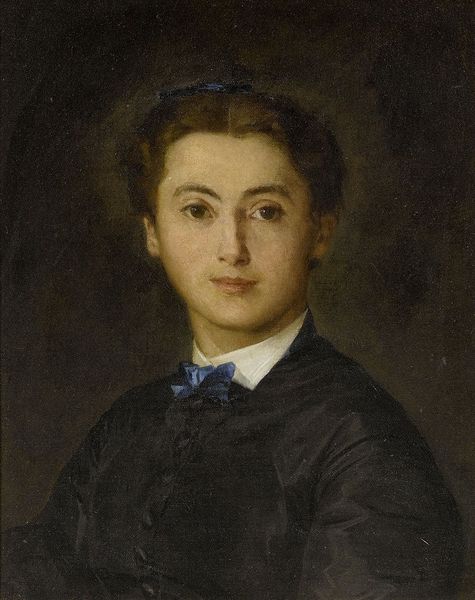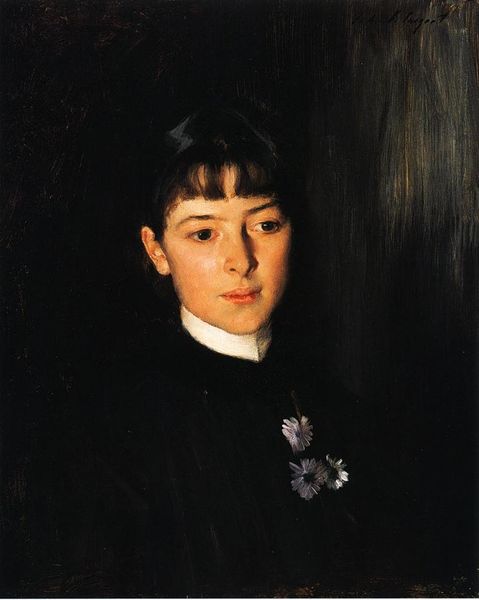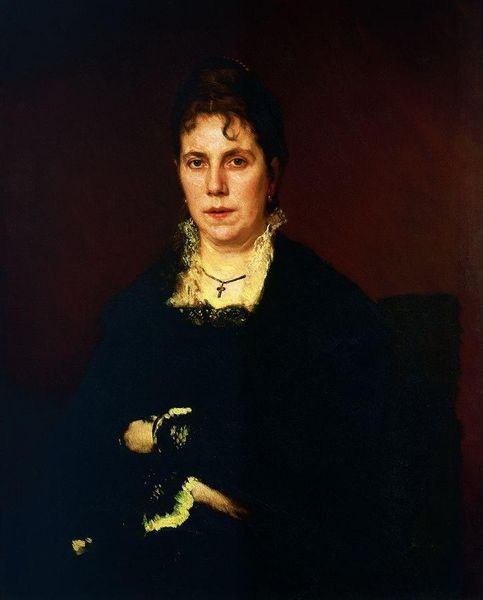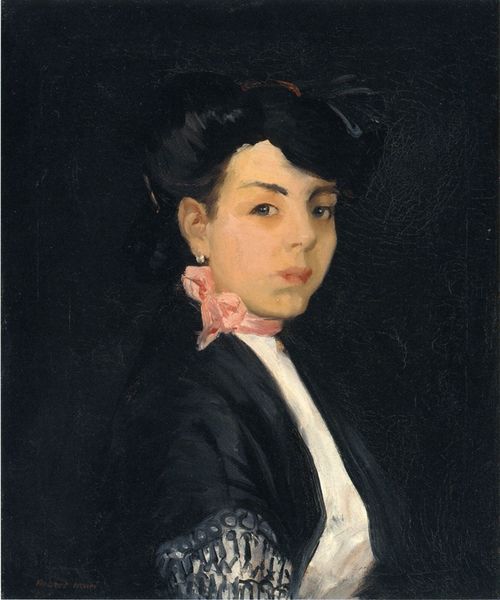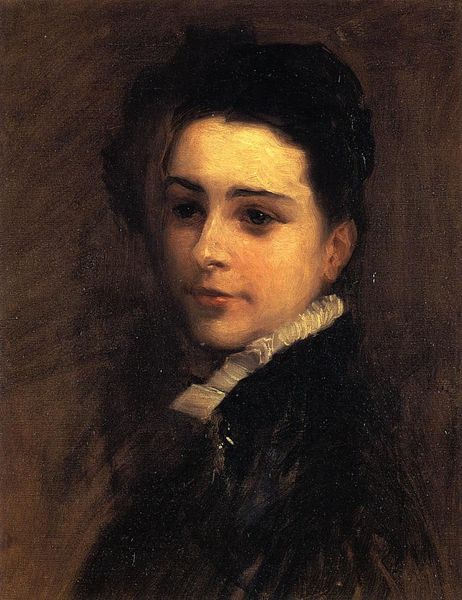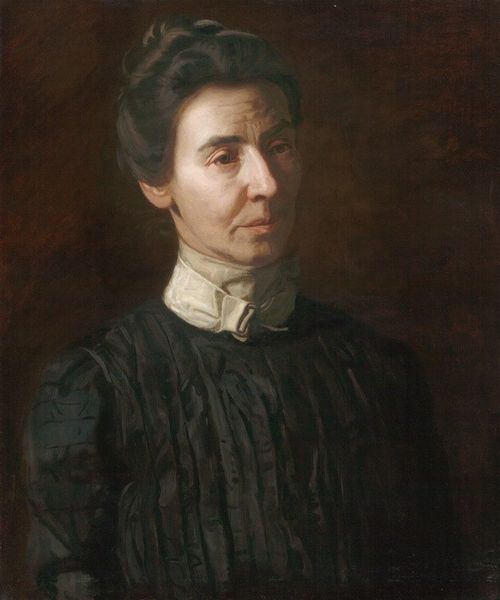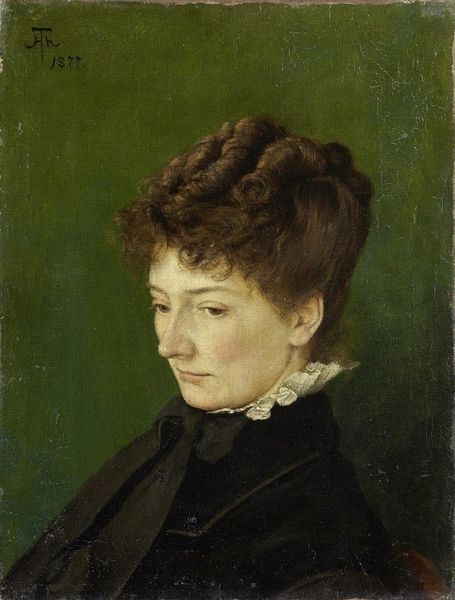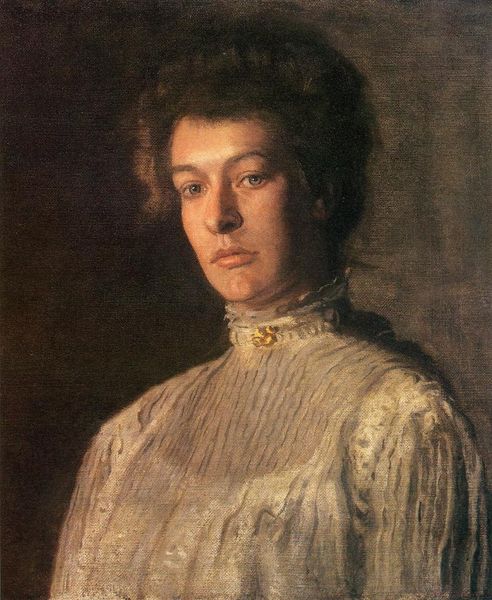
Copyright: Public domain
Curator: Ilya Repin painted this portrait of M.P. Shevtsova, wife of A. Shevtsov, in 1876, using oil on canvas. The muted palette gives it a very intimate feel, don't you think? Editor: It's a serious portrait, almost melancholic. That intricate lace collar, though—it practically vibrates with symbolic weight. Purity? Constraint? What's your take on its production? Curator: The sheer labor involved in creating that lace speaks volumes. Each loop, each knot a testament to the artisan's skill, likely someone anonymous, working within very strict socioeconomic conditions. It’s a window into 19th-century craft and consumption. Editor: Absolutely, and that contrast with her dark dress amplifies its presence. The lace becomes a key signifier. In period portraiture, it's fascinating how these crafted textiles and ornate jewellery would signal marital status, societal class, even character. What do you read in her gaze? Curator: Her gaze meets yours directly, a challenge perhaps. Repin's application of oil paint is loose, almost impressionistic, especially in the background and around the shoulders. There's a sense of immediacy, as if she might turn away at any moment. Did that capture the essence of this individual woman? Editor: It definitely conveys a specific emotional state, though its symbolism remains complex. The jewelry at her neckline is very suggestive of some form of commitment or family belonging. The slight awkwardness almost imbues the piece with unexpected power, a person caught at an authentic moment of both submission and rebelliousness. Curator: It raises interesting questions, doesn't it, about who commissions portraits and why. It speaks about labour but even the paint itself suggests a social hierarchy. Oil painting, at the time, was the height of artistic medium. The price alone could denote status. Editor: A powerful glimpse into a specific woman's role within a very defined time, place, and set of beliefs. A face in conversation with its context. Curator: Agreed. Looking beyond its initial surface reveals some thought-provoking ideas about the economic and social conditions of that time.
Comments
No comments
Be the first to comment and join the conversation on the ultimate creative platform.
